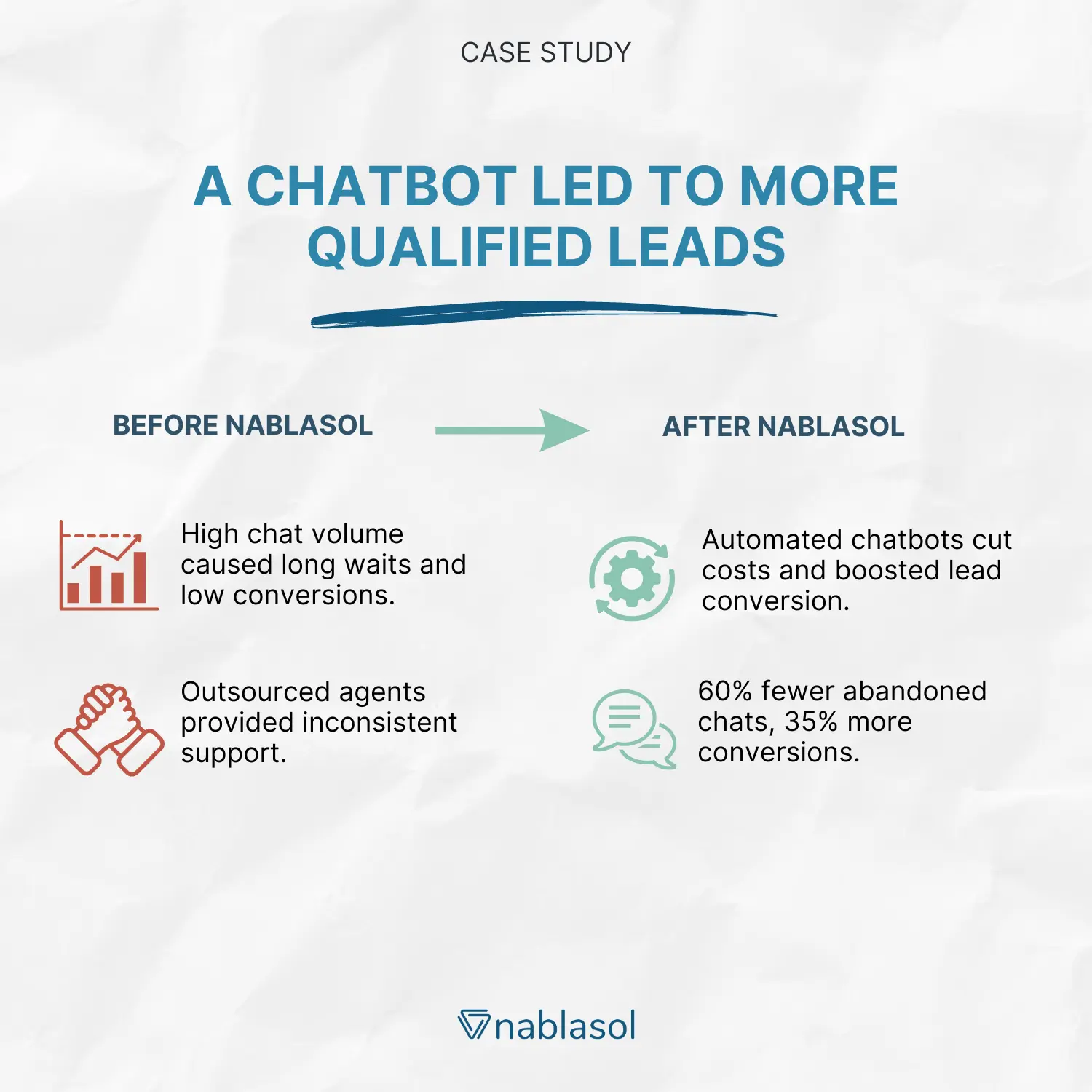Overview
With the growing trend of people being more comfortable in texting compared to talking on the phone, a website chat is becoming an essential conversion tool on websites. According to Gartner’s report, “By the end of 2020, 85% of the business engagement will be done without interacting with another human. Instead, customers will be using self-service options and chatbots”.
A Tax Resolution services company in the US, having a wide customer base across the nation, gets a huge amount of traffic both organically and through other marketing channels. The website was well-optimized for various Call-To-Action (CTA) options which encouraged people to consult solutions over either call or submit the details over requisition form on the website. A chat with the live agent was also enabled on the site.
The Challenges
There has been a noticeable increase in the number of people preferring the chat over other forms of contact methods on the website. The wait time with the existing agents was increasing during certain high-traffic times and it was always difficult to have the right number of agents available. This led to a scenario where they had to hire an outsourced team of agents to cover for the traffic and also provide after-hours support. But again there were limitations on how well the chats were answered and the conversion rate from chats was low.
Our Approach
We started by analyzing the existing chat logs and studied the flow of conversations. This data was then sanitized to get us business insights. The whole process helped us storyboard different chat paths, which were then reviewed with the client’s sales team to improve the chat flow. Based on this, we built a chatbot with a set of pathways for the users to find their desired solutions.
The basic flow of the chatbot worked as follows:
- Started with asking the “How can I help you?” question.
- Based on the client’s response, the bot took different paths and check if the user could be a qualified lead.
- The user was encouraged to give his contact information to move further if he was followed the qualification path.
- The user’s info was auto-posted to the CRM and acted upon as per the user’s request.
- Depending on the availability of live agents, a qualified user may also request to talk to an agent or even schedule an appointment for a callback.
The chatbot was monitored for a few weeks and the chat flows were tweaked based on how the users were interacting with it. Some A/B tests on different paths were also conducted to help improve the conversion rate.
Business Impact
The Business impact exceeded the expectations in the following ways:
- Automating the chatbots helped reduce the costs incurred for the chat agents.
- 60% reduction in the abandoned chat where the client left without finding the desired service. This led to a reduction in the bounce rate of the website and an increased qualified lead submission.
- A 35% increase in conversion of chat leads due to a more targeted chat script with responses focussed on increasing client confidence.
- Better convenience for the customer and sales representatives either due to better scheduling of calls or transferring the case to live sales agent based on availability
- Increase in customer satisfaction for a speedy response and identifying the problems at the grassroots level using the smart knowledge bank.
